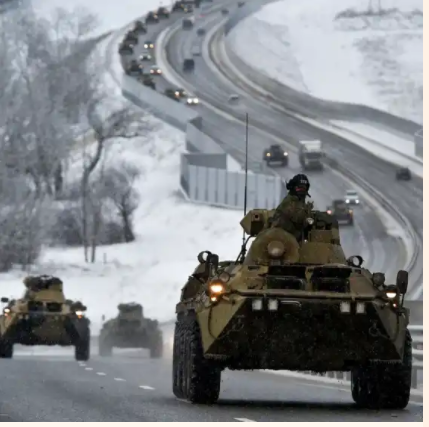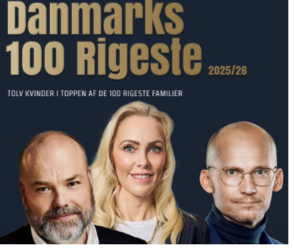Uddrag fra Julius Bär:
Key take-aways
- There is enough common ground to make a ceasefire possible between Ukraine and Russia. However, conflicting objectives challenge the long-term viability of any deal.
- European stocks and the euro may benefit, while the eurozone yield curve may steepen and safe-haven assets (e.g. the USD, CHF, and gold), as well as energy prices, may weaken.
- European defence spending will likely continue to rise on the back of the structural fragility of the multipolar world order.
Ukraine ceasefire: Global economic impact
There is sufficient common ground to make a ceasefire possible between Ukraine and Russia as part of the US initiative that involves direct talks with Russia, despite conflicting objectives. The US wants to reduce its spending on the conflict, while Russia has achieved several goals in Ukraine that satisfy its security and geopolitical interests, and domestic calls for peace talks are growing. Europe and Ukraine itself want more security, which requires more defence spending. Reducing combat operations in Ukraine would make this easier to achieve. The common ground makes a deal likely, while Russia’s threat to use military means to remain geopolitically relevant and Europe’s values-based foreign policy, which sees any violation of territorial integrity as a no-go, cast uncertainty over the long-term viability of any deal.
Short-term implications
The short-term implications of a ceasefire in Ukraine could include the restoration of energy trade and other sanctions-related disruptions. The likelihood of a pullback in assets perceived as safe havens increases as a deal becomes more likely. This implies downside risks for gas prices and the easing of logistical costs in the oil market, as well as elevated correction risks for gold. European public spending will likely continue to shift more towards increasing defence spending while hoping for lower spending on Ukrainian refugees. The lifting of financial sanctions remains uncertain in the short term given the desire to use frozen Russian assets to cover the costs of the war.
Long-term implications
The rebuilding of Ukraine and sustained shifts in public spending towards higher defence spending in Europe are likely to be long-term developments. The macroeconomic impact of Ukrainian reconstruction spending on overall growth in Europe is likely to be modest and more pronounced at the sectoral or company level. Future geopolitical developments will be driven by a multipolar world. The US will likely focus on its own interests, while Russia’s proven willingness to go to war ensures its geopolitical relevance. Europe’s suspicions will have to remain high. The structural fragility of this multipolar world order and the US approach of using all the tools at its disposal to broker favoured deals keeps the appetite for gold as a central bank currency reserve asset high.
Equities
On the equity side, a peace agreement could extend the current rally in European shares on the back of lower uncertainty (i.e. lower equity risk premia) and a decrease in energy prices, which should lift consumer sentiment and corporate operating margins. Particularly, stocks in cyclical sectors, such as chemicals, construction materials, and industrials, are likely to overproportionally benefit from a potential peace deal. That said, while Europe appears tactically attractive, we remain cautious about calling a long-term shift in performance, as the region still lacks structural growth drivers. In contrast, US equities continue to offer the most compelling long-term return prospects, particularly given their high exposure to secular growth themes, such as generative AI. However, with earnings growth broadening out, we see merit in selective diversification into European equity markets, particularly in Germany. Beyond the potential election catalyst, German stocks are heavily weighted towards economically sensitive industries, which aligns well with our 2025 outlook theme of favouring cyclicals.
Bond markets
In bond markets, a peace agreement taking shape sent spreads for European corporate bonds tighter. Moreover, the euro curve steepened, with risk-free yields higher on the prospects of more defence-related spending. At this point, we do not expect these dynamics to last, as Europe’s economic struggles are only marginally routed in the war in Ukraine. As such, we would opt for better credit quality in euro corporate credit markets and do not expect long end yields to rise much further. Furthermore, we believe eurozone periphery government bonds will continue to attract investors who are looking for some (limited) extra yield.
What is the eurozone periphery?
Geographically the European periphery is comprised of those countries on the edge of the European Union. Moving anti-clockwise around a map of the Eurozone, the geographical periphery includes countries like Ireland, Portugal, Spain, Malta, Greece and Finland.
Currencies
Regarding the rising chances of a peace deal for the Ukraine, an end to the war could weaken the US dollar and other safe-haven currencies, such as the Swiss franc, in the short term. However, the limited scope for reconstruction to boost European economic growth suggests that the peace would have little lasting impact on currency markets, in particular, only a limited strengthening of the euro, while US trade policy remains a potential source of volatility. In the longer term, a deal and subsequent lifting of sanctions against Russia could remove the stigma of the US dollar’s ‘weaponisation’, which, in recent years, has challenged the dollar’s credibility as the world’s leading reserve currency and led to a dedollarisation debate. Restored confidence in the dollar’s characteristics as a global reserve currency could continue its secular dominance, but this trust would rely more on the Trump administration’s policymaking going forward.
Enjoy the relief while it lasts
While it may seem like a lot all at once, let us make no mistake: a peace deal in Ukraine and election in Germany is nothing but the playbook that made investors (predominantly US ones) invest in European stocks at the start of the year. Although nobody can predict the future in any detail, the hopes for a peace deal combined with a policy U-turn in Europe were seen as trigger events for European assets to outperform in the first place. The record underperformance in European assets in past years and bombed-out valuations have sweetened the deal.
With regard to the impact on financial markets, the trigger events may still help the related calls: outperformance of European stocks, a waning euro weakness, safe-haven assets (e.g. the USD, CHF, and gold) taking a backseat, and energy prices softening. More growth-friendly policies would also speak in favour of a further steepening of the European yield curve. Let investors enjoy the relief while it lasts.
Intro-pris i 3 måneder
Få unik indsigt i de vigtigste erhvervsbegivenheder og dybdegående analyser, så du som investor, rådgiver og topleder kan handle proaktivt og kapitalisere på ændringer.
- Fuld adgang til ugebrev.dk
- Nyhedsmails med daglige opdateringer
- Ingen binding
199 kr./måned
Normalpris 349 kr./måned
199 kr./md. de første tre måneder,
herefter 349 kr./md.
Allerede abonnent? Log ind her



